The life of a close friend and patient was recently taken. This has been weighing upon my mind of late, as a similar event occurred in the life of my sister a few years ago. I looked over the words and passages I wrote a few years ago, and for some reason, felt strongly that I should include them here. I write this blog to help those struggling with weight, diabetes and the diseases of civilization. One of those diseases frequently affecting weight is the depression and fear that accompanies the death of a loved one. Often, the answers science offers are not enough and we are required to rely upon our faith. I share some of that with you here.
I have spent the majority of my professional life in the acquisition of knowledge and its application in the relief of significant illness. My greatest foes have been ignorance, disease, distress, disability and, ultimately, death. I come in contact almost daily with seriously ill patients facing the very real prospect of death. Of necessity, I have come to look upon death as a formidable foe to be fought. For all conscientious doctors, death’s gateway from life threatens us as the prospect of individual defeat.
The famed scientist Madame Marie Curie returned to her home the night of the funeral of her husband, Pierre Curie, who was killed in an accident in the streets of Paris. She made this entry in her diary:
“They filled the grave and put sheaves of flowers on it. Everything is over. Pierre is sleeping his last sleep beneath the earth. It is the end of everything, everything, everything.”
 BUT IS IT?
BUT IS IT?
What is this thing that men call death,
This quiet passing in the night?
Tis not the end, But Genesis
Of better worlds and greater light.
O God, touch though my aching heart,
And calm my troubled, haunting fears.
Let hope and faith, transcendent pure,
Give strength and peace beyond my tears.
There is not death, but only change
With recompense for won;
The gift of Him who loved all men,
The Son of God, the Holy One.
(G. B. Hinckley)
However, every patient of every doctor, if followed long enough will pass away. The first rule of surgery is that “all bleeding stops eventually.” The inescapable rule of life is that no matter how good your treatments are, all patient’s will meet the undertaker, eventually.
When this happens, and it happens to all of us, a sense of sadness naturally prevails regardless of the age or nature of the deceased.
If death is to happen to all of us, then why do we feel sadness at the death of a friend or loved one?
This sadness is caused by the feeling of loss tied to three age-old unanswered questions:
- Did you and I exist before we were born, and if so, where were we?
- Why are we here together and what is the purpose of this life?
- Where do we go when we die?
Are there answers to these questions?
When science does not have the answers, I have found great hope and answers in hidden within the teachings of my faith. I share them with you, not to preach or offend, but in hopes that you might find peace and solace in your life as I have in mine.
The spiritual leader Wilford Woodruff said “that if the people knew what was behind the veil, they would try by every means . . . that they might get there, but the Lord in his wisdom has implanted the fear of death in every person that they might cling to life and thus accomplish the designs of their creator.” (The Gateway We Call Death, Russell M. Nelson, p.96)
The Lord explained to Moses, “For this is my work and my glory, to bring to pass the immortality and eternal life of man.” (Moses 1:39)
This work and glory is referred to by a number of names including The Plan of Salvation, The Plan of Redemption, The Plan of Eternal Progression, The Plan of Happiness and others.
I often speak with people that say to me, “I just want to be happy.” Or they question me asking, “Will I ever really be happy?”
Happiness is the object and design of our existence . . . and well be the end thereof if we pursue the path that leads to it. Along this path lies virtue, uprightness, faithfulness, holiness and keeping the commands of our Creator. So how does this help us find happiness in the face of the death of a friend or loved one?
The answers are found in contemplation of the the three age-old questions. First, where were we before we were born?
The Old Testament prophet Job, one of the more ancient writers of the Bible, gives us some insight. The Lord asked him the same question: “Who is this that darkeneth counsel by words without knowledge? Gird up now thy loins like a man; for I will demand of thee, and answer thou me. Where was thou when I laid the foundation of the earth . . . when the morning stars sang together, and all the sons of God shouted for joy?” (Job 38:2-7)
You and I must have been somewhere – the Lord asked us where we were. And, who were all the “sons of God shouting for joy?” Why were they shouting? Where were they?
The apostle, Luke, in the New Testament answers those questions years later as he lays out the genealogy of the human family. He starts at Christ and then names each subsequent father leading up to ” . . . Enos, which is the son of Seth, which was the son of Adam, which was the son of God.” (Luke 3:38)
The apostle, John, must have had some idea of a pre-mortal existence because of the way they phrased the question to Jesus Christ about the man who was born blind, “Master, who did sin, this man or his parents, that he was born blind?” (John 9:2) The question was not “could he have sinned before he was born?” but instead, “who did sin?” Christ’s answer implied that both were possible, but neither was the case in this situation.
Paul writes to the Hebrews, “Furthermore, we have had fathers of our flesh which corrected us, and we gave them reverence; shall we not much rather be in subjection to the Father of our Spirits, and live?” (Hebrews 12:9) We are also given instruction to open our prayers with a phrase like, “Our Father in Heaven.” Hence, He is the Father of our Spirits, our Heavenly Father, our spiritual Father.
We then are brothers & sisters in the spiritual sense, and Jesus Christ is our elder brother, being the firstborn spirit child of God. If this is the case, then all of us, including you and I, were among the sons and daughters of God who shouted for joy along with Adam.
The Lord explained to Moses, “I have created all things, of which I have spoken, spiritually before they were naturally upon the face of the earth . . . for in heaven created I them.” (Moses 3:5) In addition to this, we learn from Moses that a council was held in heaven in which you and I were present. At this grand council, the plan to create this earth, including the fall of Adam, and the Atonement of Jesus Christ was presented and accepted.
There was, however, someone who opposed this plan. Lucifer rebelled and was cast out of heaven with those who chose to follow him.
If all this is true, then it means you and I accepted this plan and here we are. Accepting this plan as described by the prophet Abraham is defined as accepting our First Estate.
So, the first question is where did we come from? We came from the presence of God, the pre-mortal spirit world, in the company of all our spirit brothers and sisters.
Second question, why are we here? Trying to wrap the whole of this question into a nutshell gives us the following answer.
First, on the eternal perspective, progression requires that we each have our own physical mortal body that has the capacity of becoming refined, immortalized or glorified through the process of death and subsequently resurrection.
Second, we had to be sent somewhere outside of the presence and powerful righteous influence of God our Father to prove ourselves, to exercise our own agency, and determine in this life the nature of our life to come – the life after death. One of the prophets, Jacob, tells us that Adam & Eve were expelled out of the Garden of Eden into a “lone and dreary world” and on a probation of sorts, where a person could chose from a myriad of different things that were either good or evil. It is necessary for man to taste the bitter to enable him to appreciate the good, is one way to explain it.
The ancient prophet Alma calls this a probationary state, a time to repent, to grow, to learn responsibility, and to prepare for the next life. (Alma 12:24, 42:4)
Said the Lord, “And thus did I, the Lord God, appoint unto man in the days of his probation – that by his natural death he might be raised in immortality unto eternal life, even as many as would believe.” (Doctrine & Covenants 29:43)
Obtain a Body . . . Prove Ourselves . . . Get Experience . . . this is your first estate.
Some of us live 80 years, some of us live 50 years, some of us live 39 years, and some live only a brief few years on this earth. Will you and I be given as much time? There are laws to be learned and lived, ordinances to experience, and covenants to be made and kept, and faith and obedience to demonstrate in this life.
Third, where do we go from here? Where will I go when I die? Where have friends and family that have passed on gone to?
The penitent thief on the cross being crucified with the Savior, Jesus Christ, asked the Him the same question. The Savior responded with this answer, “Today shalt thou be with me in paradise.” (Luke 23:43)
Christ died in the literal sense that you and I will die. He underwent a physical dissolution by which His immortal spirit was separated from His body of flesh and bones, and that body was actually dead. While the corpse lay in Joseph’s rock-hewn tomb, the living Christ existed as a disembodied Spirit. Where was He? We naturally assume that he went where spirits of the dead ordinarily go. He was in the disembodied state a Spirit among spirits. He went to the Spirit world.
We know that the spirit world is not heaven, as the Savior, on the third day after his crucifixion, met the weeping Mary Magdalene and said: “I am not yet ascended to my Father.” He had gone to Paradise as he told the penitent thief, but not to the place where God dwells. Sprit Paradise, therefore, is not Heaven, or the place where God the Eternal Father and his celestialized children dwell and make their abode. Spirit Paradise is a place where dwell
righteous and repentant disembodied spirits between bodily death and resurrection. Another division of the spirit world is reserved for those disembodied beings who have lived lives of wickedness and who remain impenitent even after death.
The ancient prophet Alma explained to his son Corianton who was confused on this matter, “Now there is must needs be a space betwixt the time of death and the time of resurrection.” (Alma 40:6) “Now concerning this state of the soul between the death and the resurrection, behold it has been made know unto me by an angel that the spirits of all men, as soon as they are departed from this mortal body, yea, the spirits of all men, whether they be good or evil, are taken home to God who gave them life. And then shall it come to pass, that the spirits of those who are righteous are received into a state of happens, which is called Paradise, a state of rest from all their troubles and from all care and sorrow.”
“And the spirits of the wicked, yea, who are evil – for behold they have no part nor portion of the Spirit of the Lord; for behold they chose evil works rather than the good; therefore, the spirit of the devil did enter into them, and take possession of their house – this is the state of the souls of the wicked, yea, in darkness, and as a state of awful, fearful looking for the fiery indignation of the wrath of God upon them; thus they remain in this state, as well as the righteous in paradise, until the time of their resurrection.” (Alma 40:11-14)
The Spirit World is therefore quite a unique place.
Another apostle and scriptural historian, Bruce R. McConkie, explains from the Savior’s parable of the rich man and Lazarus, “The spirit world is divided into two parts: Paradise which is the abode of the righteous, and hell which is the abode of the wicked. Until the death of Christ, these two spirit abodes were separated by a great gulf, with the intermingling of their respective inhabitants strictly forbidden.” (Luke 16:19-31) We know that Christ visited this spirit world because the apostle Peter’s biblical account tells us the following: “For Christ also hath once suffered for sins, the just for the unjust, that he might bring us to God, being put to death in the flesh, but quickened by the Spirit: by which also he went and preached unto the spirits in prison; Which sometime were disobedient, when once the long-suffering of God waited in the days of Noah, while the ark was a preparing, wherein few, that is, eight souls were saved by water.” (1 Peter 3:18-20)
When Christ visited the Spirit world, he also organized the affairs of this kingdom such that the righteous spirits began teaching the His gospel to those who had not heard it and those who were disobedient or wicked. Although, there are two spheres within the one spirit world, there is now some intermingling of the righteous and the wicked that inhabit those spheres; and when the wicked spirits repent, they leave their prison-hell and join the righteous in spirit paradise. Hence Joseph Smith said, “Hades, Sheol, paradise, spirit prison are all one: it is a world of spirits. The righteous and the wicked all go to the same world of spirits until the resurrection.” (Teachings, p. 310).
Life, work and activity all continue in the spirit world. Men and women have the same talents and intelligence there which they had in this life. They possess the same attitudes, inclinations, and feelings there which they had in this life. They believe the same things, as far as eternal truths are concerned: they continue in effect, to walk in the same path they were following in this life. (Mormon Doctrine, Spirit World, McConkie) The prophet Amulek said, “That same spirit which doth possess your bodies at the time that ye go out of this life, that same spirit will have power to possess your body in the eternal world.” (Alma 34:34) Thus, if a man has the spirit of charity and the love of truth in his heart in this life, that same spirit will possess him in the spirit world.
Family and friends who have passed away with the spirit of joviality and happiness will find it will carry them forward in the gospel and in the teaching of the gospel to many others on the other side.
When I leave this frail existence,
When I lay this mortal by,
Father, Mother, may I meet you
In your royal courts on high?
Then at length, when I’ve completed
All you sent me forth to do,
With your mutual approbation
Let me come and dwell with you.
(Eliza R. Snow, “O My Father,” Hymns, #292)
This post mortal world is a place to await resurrection. All will be resurrected. The Atonement of Jesus Christ ensures a universal resurrection. “For as in Adam all die, even so in Christ shall all be made alive.” (1 Cor 15:22) Judgment will then, after the resurrection, be passed on all according to individual works and obedience while in mortality. The great prophet Nephi says, “For by grace are they saved after all they can do.” (2 Nephi 25:23) Said the Savior to His disciples, “Yet a little while, and the world seeth me no more, but ye see me because I live and ye shall live also.” (John 14:19)
Inheriting the glory that Christ has been resurrected into is conditional and is based upon the laws by which individuals choose to govern their mortal lives.
Said the prophet Alma, “The plan of restoration is requisite with the justice of God; for it is requisite that all things should be restored to their proper order. Behold, it is requisite and just, according to the power and resurrection of Christ, that the soul of man should be restored to its body, and that every part of the body should be restored to itself.
“And it is requisite with the justice of God that men should be judged according to their works; and if their works were good in this life, and the desires of their hearts were good, that they should also as the last day, be restored unto that which is good.” (Alma 41:2-3)
The righteous who understand and live the truth will be resurrected to receive a glory in heaven referred to as Celestial and Paul refers to this as comparable to the glory of the Sun. In this celestial kingdom also known as the Kingdom of God, marriages and eternal family relationships are secured, eternal progress and progression is uninterrupted forever and ever.
The less valiant who choose the lesser law will be resurrected to receive a glory Terrestrial that Paul compares to the glory of the moon. They chose not to enjoy that which they could have enjoyed. These would not accept the words of the prophets in this life and died in their sins, but accepted afterwards.
And to the undisciplined, wicked, liars, sorcerers, adulterers, whoremongers, and the unrepentant who are shut out in spirit prison until the Savior finishes his work (D&C 76:85), they will be resurrected to a glory Telestial or that equivalent, as Paul puts it, to the “glory of the stars, for one star differeth from another star in glory.” (1 Corinthians 15:40-44) The remainder will become attached to Perdition, those who refuse any part of the Atonement of Christ – those that are cast off forever, as the scriptures say, into outer darkness.
What of those that have taken their lives prematurely when the Lord has said, “Thou shalt not kill”? Are they consigned to spirit prison and later a telestial glory?
Another of the Lord’s modern day apostles, M. Russell Ballard, recently stated that there are “some things we know, and some we do not . . . [the] judgment for sin is not always as cut and dried as some of use seem to think. . . the Lord recognizes differences in intent and circumstances: Was the person who took his life mentally ill? Was he or she so deeply depressed as to be unbalanced or otherwise emotionally disturbed? Was the suicide a tragic, pitiful call for help that went unheeded too long or progressed faster than the victim intended? Did he or she somehow not understand the seriousness of the act? Was he or she suffering from a chemical imbalance in their system that led to despair and a loss of self control? Obviously, we do not know the full circumstances surrounding every suicide. Only the Lord knows the details, and he it is who will judge our actions here on earth.” (Liahona, March 1988, Suicide: Some Things We Know, and Some We Do Not)
Said the prophet Joseph Smith: “While one portion of the human race is judging and condemning the other without mercy, the Great Parent of the universe looks upon the whole of the human family with a fatherly care and paternal regard . . . He is a wise Lawgiver, and will judge all men, not according to the narrow contracted notions of men, but ‘according to the deeds done in the body whether they be good or evil,’ . . . We need not doubt the wisdom and intelligence of the Great Jehovah; He will award judgment or mercy to all nations according to their several deserts, their means of obtaining intelligence, the laws by which they are governed, the facilities afforded them of obtaining correct information, and His inscrutable designs in relations to the human family; and when the designs of God shall be made manifest, and the curtain of futurity be withdrawn, we shall all of us eventually have to confess that the Judge of all the earth has done right.” (Teachings of the Prophet Joseph Smith, Salt Lake City, Deseret Book, 1938, p218)
When we are judged, the Lord will take all things into consideration: our genetic and chemical makeup, our mental state, our intellectual capacity, the teachings we have received the traditions of our fathers, our health, and so forth.
That is the plan. Those are the answers. Death, then, is a gateway.
Upon the cross he meekly died
For all mankind to see
That death unlocks the passageway
Into eternity.
(Hymns, #184 – “Upon the Cross of Calvary”)
“The keeper of the gate is the Holy One of Israel; and he employeth no servant there; and there is none other way save it be by the gate; for he cannot be deceived, for the Lord God is his name.” (2 Nephi 9:41)
To live, to love, and to be loved are the essence of what is important in this life. Those we have known and passed on have lived great lives, they were loved and are still loved.
Mourning and tears are normal – in fact, they are a healthy reaction. Mourning is one of the purest expressions of deep love. It is a natural response in accord with divine commandment: “Thou shalt live together in love, insomuch that thou shalt weep for the loss of them that die.” (D&C 42:45)
By mortal standard time, it’ll be much longer than we like till we see our loved ones again. By eternal standard time – “We’ll see you soon.”
Until then watch. There are another set of hands you should look for, pierced at the palms and at the wrists. You will recognize His hands when you see them. You will recognize Him when you see Him. His hands are always open. The brightness of His eyes and smile will warm the darkest recesses of your soul. When you meet Him, touch his hands, feel the mark in his side, and bow at His feet. He knows you by name. He knows each of us by name. He will offer you the peace, the rest and the love that you seek.
“To everything there is a season, and a time to every purpose under heaven: A time to be born and a time to die . . . A time to weep, and a time to laugh, at time to mourn, and a time to dance . . . a time to get and a time to loose . . . a time to embrace . . . and a time to love.” (Ecclesiastes 3:1-8)
This death of which I speak eventually comes to all. It comes to some in childhood, to some in ripe old age, and to others in the prime of life. To some it comes by natural means, anticipated and expected, to others it comes without warning, unannounced. It may come quietly in the peace of the night, or it may come violently in the confusion of an instant, but assuredly, it comes to all.
To you my beloved friends, patients and family, remember His invitation. “Come unto me, all ye that labor and are heavy laden, and I will give you rest. Take my yoke upon you, and learn of me; for I am meek and lowly in heart; and ye shall find rest unto your souls. For my yoke is easy, and my burden is light.” (Matthew 11:28-30)
This yoke is a conviction, a way of life; it is called the Gospel of Jesus Christ. It does not take away challenges, disappointments, frustrations, pain or sorrow. But, when lived, it lifts burdens, lightens loads, and makes life bearable. It empowers you with light and strength from on high to learn and grow from experiences in spite of whatever life brings.
This is my conviction. This I know to be true. It is what brings hope in the battle against the inevitable foe, death. May it bring you the warmth of heart and the solace of soul that it brings to me as I ponder its meaning in my life and the lives of my family. May the knowledge of the Plan of Salvation bring you comfort in knowing that those we care about have passed through the gateway we call death to look forward upon immortality and the Glory of the Savior Jesus Christ.





















 So, how do you manipulate the hormones in a way to control the rebounding hunger and suppression of metabolism? This is where we put a bit of twist on the knowledge we’ve gained from alternate day fasting. Recent research shows that “mild” energy deficit in a pulsatile manner, that has the ability to mimicking the body’s normal bio-rhythm’s is dramatically effective in reducing weight and maintaining normal hormonal function without cause of rebound metabolic slowing (4).
So, how do you manipulate the hormones in a way to control the rebounding hunger and suppression of metabolism? This is where we put a bit of twist on the knowledge we’ve gained from alternate day fasting. Recent research shows that “mild” energy deficit in a pulsatile manner, that has the ability to mimicking the body’s normal bio-rhythm’s is dramatically effective in reducing weight and maintaining normal hormonal function without cause of rebound metabolic slowing (4).






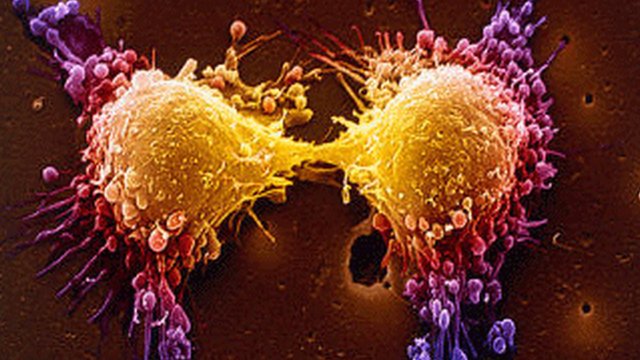






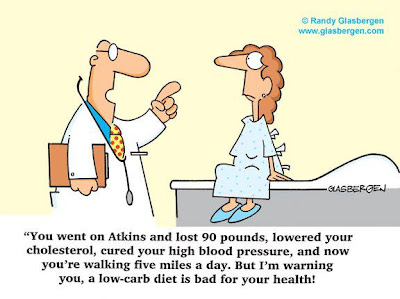
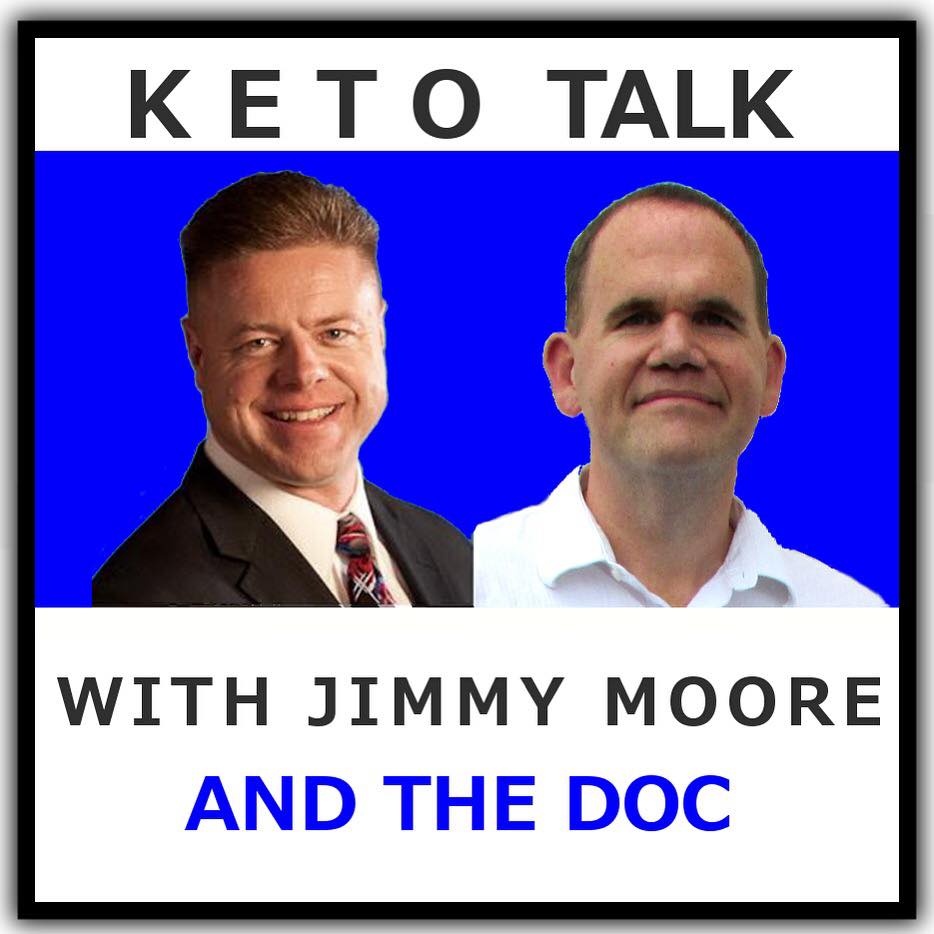

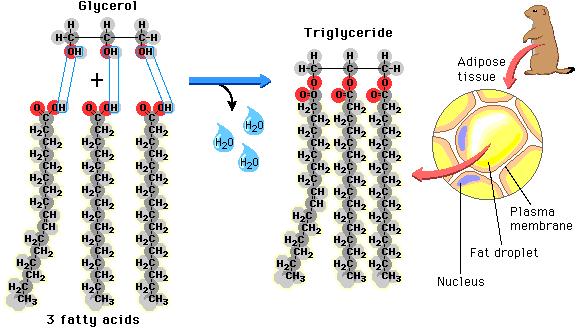 as well as the fat that is found in our food is found in the form of triglycerides. Each triglyceride molecule is made of a “glyceride” (glycerol backbone) and three fatty acids (hence the “tri”) that look like tails. Some of the fat in our adipose cells come from the food we eat, but interestingly, the rest comes from carbohydrates
as well as the fat that is found in our food is found in the form of triglycerides. Each triglyceride molecule is made of a “glyceride” (glycerol backbone) and three fatty acids (hence the “tri”) that look like tails. Some of the fat in our adipose cells come from the food we eat, but interestingly, the rest comes from carbohydrates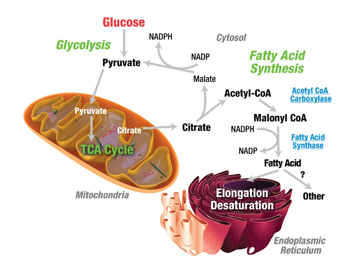
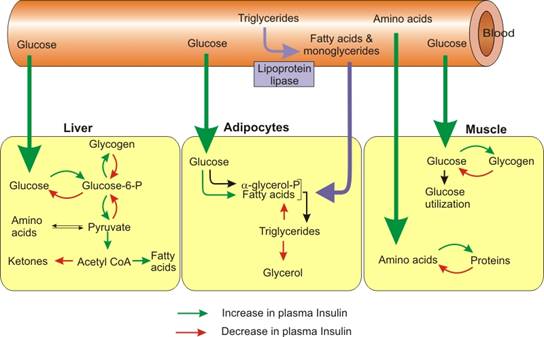 before they can be taken up into the fat cells. The reconstitution of the fatty acids with glycerol is called esterification. Interestingly, the process of lipolysis and esterification is going on continuously, and a ceaseless stream of free fatty acids are flowing in and out of the fat cells. However, the flow of fatty acids in and out of the fat cells depends upon the level of glucose and insulin available. As glucose is burned for fuel (oxidized) in the liver or the fat cell, it produces glycerol phosphate. Glycerol phosphate provides the molecule necessary to bind the glycerol back to the free fatty acids. As carbohydrates are being used as fuel, it stimulates increased triglyceride formation both in the fat cell and in the liver, and the insulin produced by the pancreas stimulates the lipoprotein lipase molecule to increased uptake of the fatty acids into the fat cells (3).
before they can be taken up into the fat cells. The reconstitution of the fatty acids with glycerol is called esterification. Interestingly, the process of lipolysis and esterification is going on continuously, and a ceaseless stream of free fatty acids are flowing in and out of the fat cells. However, the flow of fatty acids in and out of the fat cells depends upon the level of glucose and insulin available. As glucose is burned for fuel (oxidized) in the liver or the fat cell, it produces glycerol phosphate. Glycerol phosphate provides the molecule necessary to bind the glycerol back to the free fatty acids. As carbohydrates are being used as fuel, it stimulates increased triglyceride formation both in the fat cell and in the liver, and the insulin produced by the pancreas stimulates the lipoprotein lipase molecule to increased uptake of the fatty acids into the fat cells (3).



 That something else should be fat. Protein must be moderated, as it will also be stored as fat if you eat too much. So, if the carbohydrates are kept low, fat intake can be increased and the body will pick the fat it wants and essentially throw the rest out without raising cholesterol, causing weight gain or causing heart disease. This is why we want you to use good natural animal fats like butter, hard cheese, olive oil, coconut oil, avocado, etc. Look for fats highest in omega-3 fatty acids as these decrease inflammation and improved weight loss. Look for meats highest in fat like red meat (55% fat) and pork (45% fat). Take the food pyramid and flip it over.
That something else should be fat. Protein must be moderated, as it will also be stored as fat if you eat too much. So, if the carbohydrates are kept low, fat intake can be increased and the body will pick the fat it wants and essentially throw the rest out without raising cholesterol, causing weight gain or causing heart disease. This is why we want you to use good natural animal fats like butter, hard cheese, olive oil, coconut oil, avocado, etc. Look for fats highest in omega-3 fatty acids as these decrease inflammation and improved weight loss. Look for meats highest in fat like red meat (55% fat) and pork (45% fat). Take the food pyramid and flip it over.
 20% of women that I see in my practice who are over 55 years old, need some degree of estrogen replacement before they are able to lose weight. Estrogen plays a very large role in regulation of the metabolism and when deficient, causes weight retention or weight gain. Talk to your doctor about the risks and benefits of estrogen for you individually in this situation.
20% of women that I see in my practice who are over 55 years old, need some degree of estrogen replacement before they are able to lose weight. Estrogen plays a very large role in regulation of the metabolism and when deficient, causes weight retention or weight gain. Talk to your doctor about the risks and benefits of estrogen for you individually in this situation.
 People with significant stressors in their life have been show to have an increased corsiol secretion. Chronic stress induces hyperactivity of the hypothalamic-pituitary-adrenal axis causing a daily, cyclic over production of cortisol and then normalization of cortisol after resolution of the stressor. This cortisol response is not high enough to lead to a true
People with significant stressors in their life have been show to have an increased corsiol secretion. Chronic stress induces hyperactivity of the hypothalamic-pituitary-adrenal axis causing a daily, cyclic over production of cortisol and then normalization of cortisol after resolution of the stressor. This cortisol response is not high enough to lead to a true  Under a stress response, cortisol turns on gluconeogensis in the liver (the conversion of amino acids or proteins into glucose) for fuel. Cortisol, also, shifts the storage of fats into the deeper abdominal tissues (by stimulating insulin production) and turns on the maturation process of adipocytes (it makes your fat cells age – nothing like having old fat cells, right?!) In the process, cortisol suppresses the immune system through an inhibitory effect designed to decrease inflammation during times of stress (7,8,9). If this was only occurring once in a while, this cascade of hormones acts as an important process. However, when cortisol production is chronically turned up, it leads to abnormal deposition of fat (weight gain), increased risk of infection, impotence, abnormal blood sugars, brain fog, head
Under a stress response, cortisol turns on gluconeogensis in the liver (the conversion of amino acids or proteins into glucose) for fuel. Cortisol, also, shifts the storage of fats into the deeper abdominal tissues (by stimulating insulin production) and turns on the maturation process of adipocytes (it makes your fat cells age – nothing like having old fat cells, right?!) In the process, cortisol suppresses the immune system through an inhibitory effect designed to decrease inflammation during times of stress (7,8,9). If this was only occurring once in a while, this cascade of hormones acts as an important process. However, when cortisol production is chronically turned up, it leads to abnormal deposition of fat (weight gain), increased risk of infection, impotence, abnormal blood sugars, brain fog, head

















